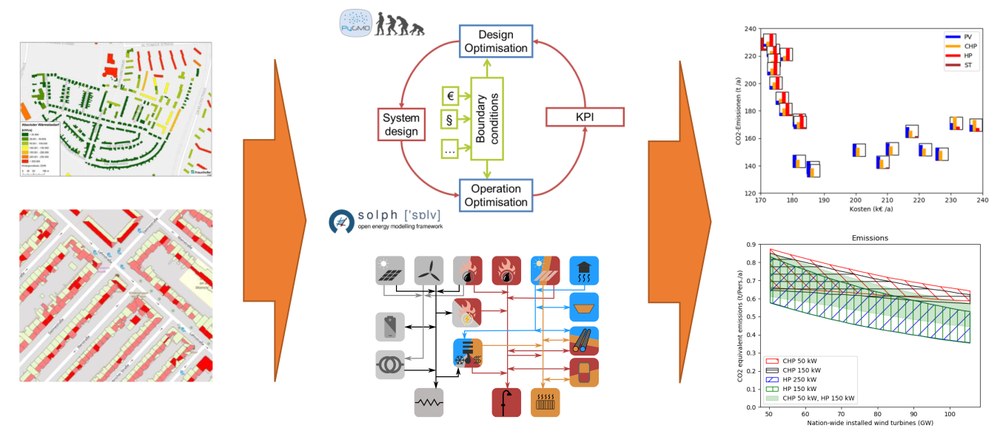Energy Systems Technology
The Energy Systems Technology department focuses on the interaction between system-relevant technologies within decentralised networked structures, particularly at the low-voltage and medium-voltage level.
The Oldenburg-based company Lintas Green Energy GmbH has developed a framework to advise customers on optimising their energy use in neighbourhoods, production facilities or logistics centres. This is based on parts of the MTRESS simulation model developed by the Institute for Networked Energy Systems. Lintas combines these elements with other tools to create energy strategies that enable customers to achieve goals such as an improved cost structure or lower greenhouse gas emissions.

MTRESS enables the generalised analysis and optimisation of energy systems with regard to technical as well as economic, ecological and legal aspects. Lintas uses various parts of it to create digital twins of energy systems.
For example, it is possible to calculate whether solar thermal or PV modules should be installed on an available roof area from an economic point of view and, if so, how many modules would achieve the best economic, ecological or technical result. Other options and potentials such as heat pumps, energy storage or heat recovery from production processes are also determined and calculated. Customers come from a wide range of sectors, from logistics and the food industry to residential neighbourhoods.
The integration of MTRESS elements into your own software is comparatively simple. Individual snippets of the open source model can be adopted one-to-one. In the future, Lintas intends to expand its offering based on MTRESS.
More Informationen
Before the first hammer is struck on any construction project, information has to be gathered: What energy supply is available on site? Is it possible to connect to an existing heat and power supply infrastructure? What other options would make technological and economic sense? Do special climatic factors need to be taken into account? Once all the data is available, the energy planning of the respective project can begin.
However, often only individual buildings are taken into account. There is also a risk that design options will be overlooked or chosen that would be inefficient with regard to larger units such as urban neighbourhoods.
Against this background, the Institute of Networked Energy Systems has developed the MTRESS (Model Template for Renewable Energy Supply Systems) tool, which objectifies the decision for an energy system across sectors and industries and at the same time incorporates the widest possible range of influencing factors and energy options. This generic energy system model enables project planners, local authorities and energy suppliers to analyse the heat requirements in buildings and neighbourhoods as well as for trade and industry in order to derive options for action for an optimised future energy supply on the basis of this data.
The MTRESS open source model is open to users from a wide range of sectors. They can use it in full or in part, for example to build their own software solutions and develop consultancy services. In this way, DLR's simulation model promotes the resource-saving, efficient use of energy and thus contributes to the success of the energy transition.
